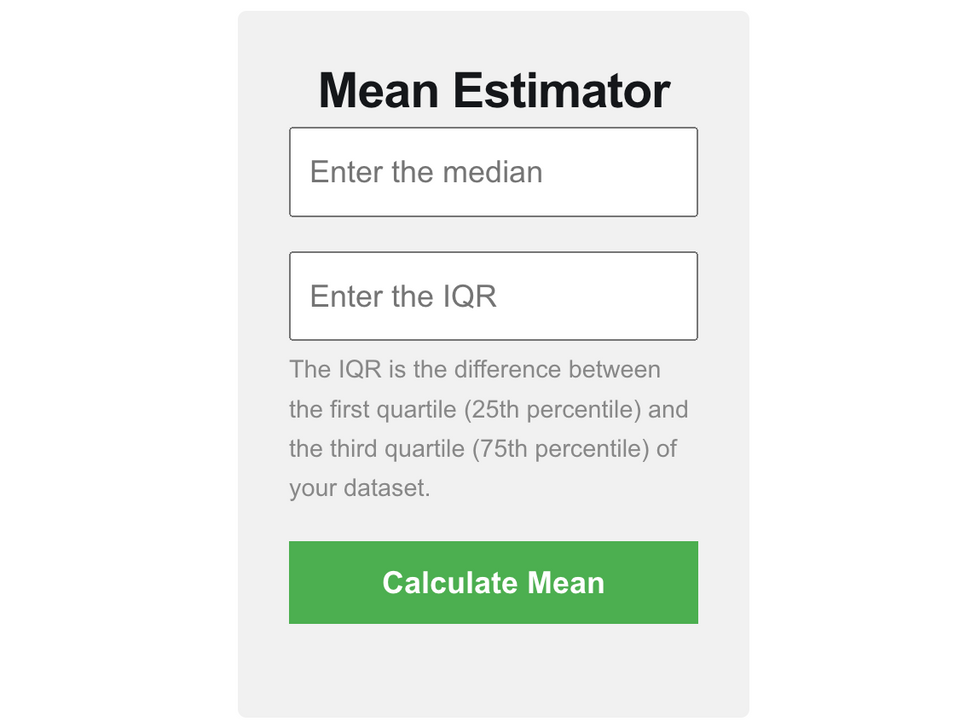Mean Estimator Calculator in Meta-analysis

Translational tools from the article: Methods of Converting Effect Measures Used in Meta-analysis: A Narrative Review and A Practical Guide.
Suppose a medical researcher is analyzing a dataset containing information about the time taken for patients to recover from a particular treatment. The dataset's median recovery time is 12 days, and the interquartile range (IQR) is 6 days. However, majority of other studies used "mean" to report recovery time. You can use Mean Estimator Calculator to calculate the mean from the available medianThe calculator is based on the following reference
Mean Estimator
The calculator uses an approximation formula to estimate the mean from the median and IQR. This formula assumes that the data follows a symmetric distribution (e.g., normal distribution). For data with skewed or heavily-tailed distributions, the approximation might be less accurate. The accuracy of the estimated mean depends on how closely the dataset follows the assumed distribution. In some cases, the true mean might deviate significantly from the estimated mean.
The formula for estimating the mean from the median, sample size, and IQR:
mean ≈ median + [(1/3) * (IQR)]
Reference
Toubasi, A., Al-Sayegh, T., & Rayyan, R. (2023). Methods of Converting Effect Measures Used in Meta-analysis: A Narrative Review and A Practical Guide. High Yield Medical Reviews. Retrieved from https://hymr.highyieldmed.org/index.php/HYMR/article/view/
Wan, X., Wang, W., Liu, J., & Tong, T. (2014). Estimating the sample mean and standard deviation from the sample size, median, range and/or interquartile range. BMC Medical Research Methodology, 14, 135. https://doi.org/10.1186/1471-2288-14-135
